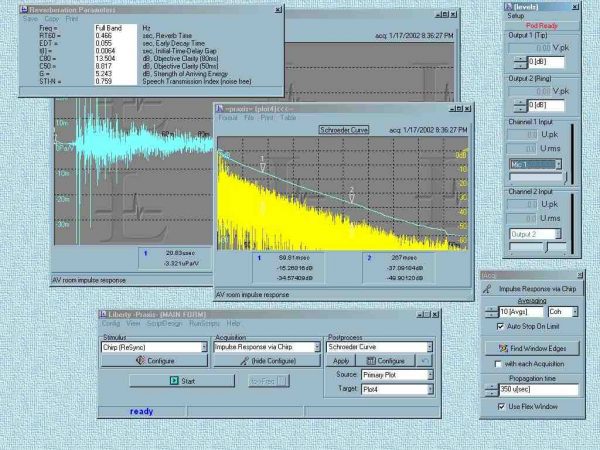

- Import recording into fuzzmeasure how to#
- Import recording into fuzzmeasure full#
- Import recording into fuzzmeasure pro#
- Import recording into fuzzmeasure software#
- Import recording into fuzzmeasure download#
You get a calibrated mic, it walks you through the measurement, and it creates a custom EQ curve - essentially an inverse of your room, boosting the dropouts and cutting the peaks.
Import recording into fuzzmeasure software#
Once you have put some essential treatment in I would definitely recommend Sonarworks - it's a software room correction. The side panels and cloud, from thinner panels, also make a difference - you can buy those in many places, although I also made mine.

I built my own bass traps using Knauf ECOSE, I think it was the 45 weight (i'd have to check) and put them in all coreners, 600mm depth.
Import recording into fuzzmeasure full#
Evened it out a bit with the traps, still too bassy on the back wall, but you don't listen critically in that position and the response only needs to be even at the listening position for such a small room.īit late to this thread, but I agree with this, and would also add 'difussion' which is anything from shelves full of books to specialist panels. That's why you bass trap the back wall and the corners.

Here's the waterfall plot of my room in the listening position and the back wall, you can see the difference in the bass response. Some 5.1 receivers do the same thing for living rooms and surround systems with a bit more automation and EQ. You can see where the frequencies are exaggerated and/or missing and you can plan accordingly. Sort of, you put the mic in different places, the listening spot, the back of the room, a few others and you play a combination of sweep tones, blips and white or pink noise (not all at the same time.) then the software shows you a waterfall graph of the frequency response, another of the RT. Does that sound sensible? It would work for bass traps maybe. Thinking about FuzzMeasrure (which is mac only, so no good for me) I have a vague memory of seeing a video someone "shooting a room" using a mic, and I guess it must have been a frequency graph? So you play stuff, poke your mic into different bits of the room and see if the frequencies coming back are the same as in the original. If you've got more money that sense, take a look at these little boxes of voodoo, they are unbelievably good. I did think about building the bass traps myself, but I'm just not that good at DIY and EQ do some really good packs. It's a great little room measurement tool, but it relies on the quality of the mic and speakers, best used with a good Omni and whatever monitors you intend to use in the room.! I'm going to investigate.! Edited Septemby Skol303 I used Fuzzmeasure to get the basic plot of rooms to tell me where the problems are
Import recording into fuzzmeasure how to#
Lots of tutorials online for how to do so. If you have the time and patience, you can manufacture bass traps yourself fairly easily and cheaply (says someone who has never done this himself.). Most manufacturers seem to use ECOSE (a type of Rockwool). It mostly just dampens the high frequencies, which can leave the room sounding 'off'.īass trapping is all about density and volume of 'stuff' and the more the better. Foam is next to useless for taming bass, which accounts for 99% of problems in 99% of home studios (*Department of Made Up Statistics, 2017). Which sadly isn't meįibre cored units are much better than foam, which isn't as effective as some people would have you believe, but will help some.Ībsolutely this. There's lots of basic advise on Gearslutz and elsewhere online (pretty much summarised by my point 1 above), but of course each solution is ultimately specific to the room itself - so if you want a detailed answer, you need to measure/provide the detail yourself or ask for help from a professional. acoustic treatment is a HUGE topic that gets very scientific very quickly. I personally have experience of using Blue Frog Audio (small independent company), who were just great and spent a lot of time working out what treatment I needed, using Google Sketchup to illustrate their ideas.īut ultimately. The people at GIK Acoustics are arguably the market leaders with offices in the US and UK. if you're able to spend some money, there are a number of companies who can do all this for you.
Import recording into fuzzmeasure download#
Pretty much 99% of home studios will need that exact treatment.Ģ) The more involved way, which is to buy yourself a calibrated measurement mic, download a free copy of Room EQ Wizard software, learn how to use it (no mean feat - I've dabbled!) and get yourself some accurate room measurements to inform your choices for acoustic treatment. Other than that, there are basically two ways of approaching this:ġ) The easy way, which is to assume that your room will need bass traps in every corner, side panels next to where your desk is and a 'ceiling cloud' panel above it.
Import recording into fuzzmeasure pro#
lots of pro audio folk on there who are happy to help. I can't recommend the Gearslutz forum enough for this kind of thing.


 0 kommentar(er)
0 kommentar(er)
